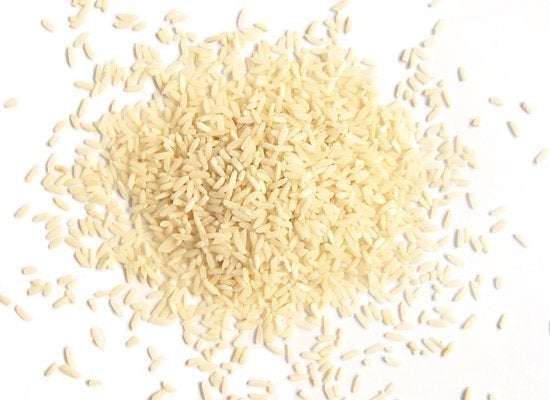Rice is more than just a side dish -- it's one of the most important and widely consumed food staples in the world. For many cultures, it's not just a food, but a way of life. It's grown throughout the world, especially in Asia, with China as the leading producer.
You'll find that many classic dishes from around the globe are made with rice. Just think of Asian stir-fry recipes, Italian risotto, Spanish paella, Southern dirty rice, Japanese sushi and so much more.
When you're shopping for rice at the grocery store, you probably reach for the same box or bag every time. We're here to show you the world of possibilities rice offers.
The rice you probably use most often is white rice, which is a long-grain rice that is polished down to remove the bran and germ, leaving just the white endosperm (the rice kernel). But there's more to rice than just the standard white. Brown rice, which is gaining popularity, is considered whole grain, because it includes the bran and germ. But before we get into brown vs. white, you must know that rice comes in three types or sizes, long grain, medium grain, and short grain.
Long grain is a classification for rice that is at least three times as long as it is wide. Think of long-grain white rice, like Carolina, or long-grain brown rice, like Uncle Ben's. Basmati and Jasmine, popular in Indian and Thai cuisine, are also long-grain varieties. Medium grain rice is less than three times as long as it is wide. Risotto rices, like Arborio, Carnaroli, and Vialone Nano are considered medium grain, but are sometimes lumped together with short grain. Short grain rice is less than twice as long as it is wide. Sushi rice is a good example of short-grain rice.
Cooking rice can be as simple as combining rice with double the amount of water and boiling it until tender. That works best for long-grain white rice, but other varieties can take longer to cook, or require less water. We recommend reading your package instructions for the correct amount of water to use per cup of rice. There are two other methods for cooking rice beyond the simple method mentioned above. Rice can also be cooked like pasta, in an abundant amount of water and then drained. Or, as many Asian cuisines dictate, certain rice, like sticky rice or sushi rice, should be steamed, which involves placing the rice in a fine-mesh steamer basket over boiling water.
White rice can last many years, because the bran and germ are not intact. But brown rice and other whole-grain rices tend not to keep longer than 6 months. It's best to use whole-grain rices within 3 to 6 months. It's also a good idea to store the rice in a cool dry place, or better yet in your refrigerator or even freezer.
Browse the gallery below to learn more about some of the major varieties of rice available in the market.
What's your favorite rice variety? How do you prepare rice? Leave a comment below.
